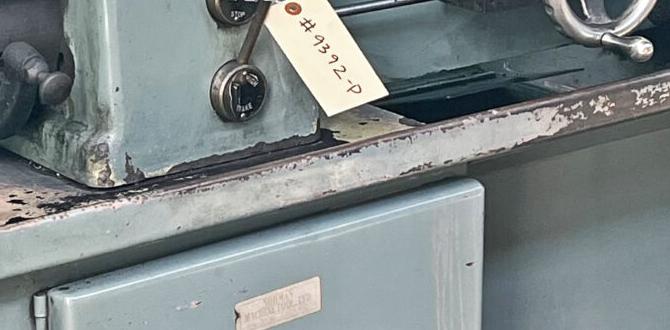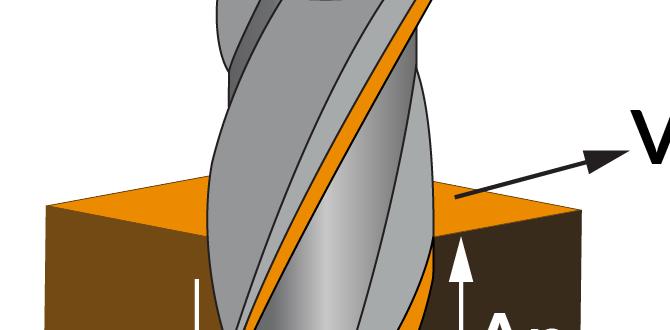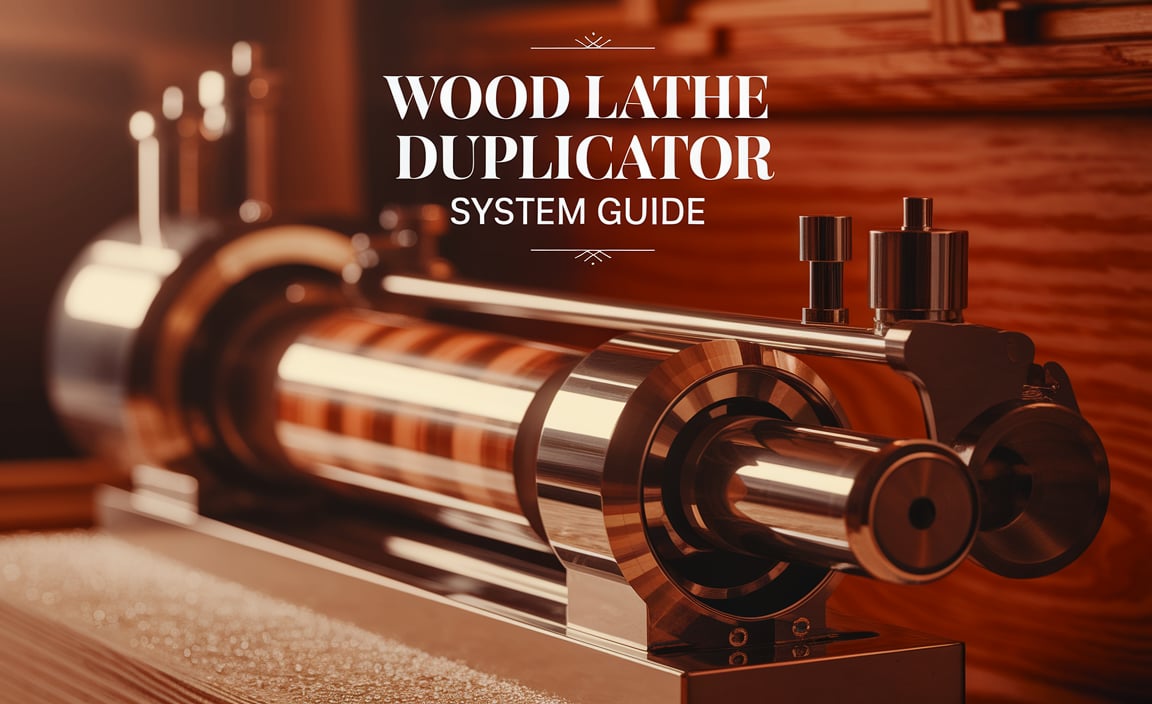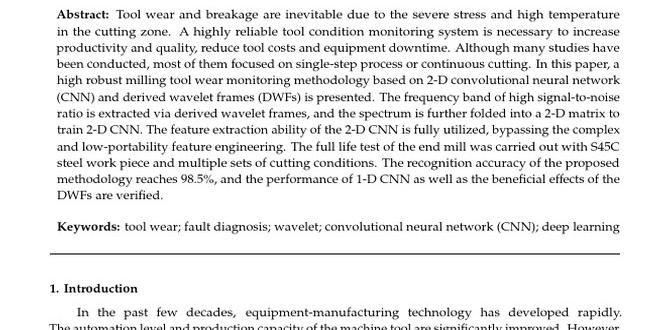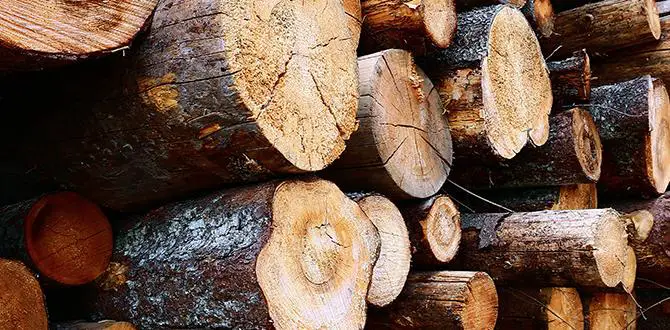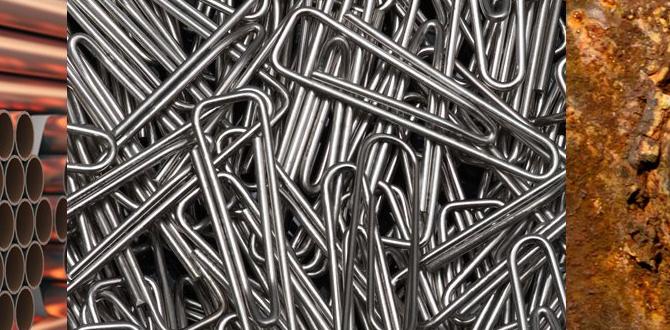Have you ever wondered how small changes in tools can make a big difference in metal working? The tool nose radius is one such feature. It’s a small part, but its impact on the surface finish is huge. Imagine trying to create a smooth, shiny surface. If your tool has the right nose radius, your work will shine like a star!
Every machinist knows that the right tools can make all the difference. A well-designed tool nose helps cut materials more easily. It also helps produce a better finish on the surface of the material. Have you ever tried sanding wood? The finer the sandpaper, the smoother the finish. It’s the same idea with tool nose radii in machining!
In this article, we will explore the amazing connection between tool nose radius and surface finish. You’ll learn how these two factors work together to help you achieve great results. Are you ready to dive in and discover some secrets of the machining world? Let’s go!
Tool Nose Radius And Surface Finish: Key Considerations

Tool Nose Radius and Surface Finish
The tool nose radius impacts the quality of surface finish in machining. A larger radius can create smoother surfaces, while a smaller radius may lead to rougher finishes. Did you know that the right radius can reduce tool wear? Manufacturers often struggle to balance cut quality and tool life. Choosing the right tool nose radius can help achieve the desired results. Understanding this can improve efficiency and save costs in production.What is Tool Nose Radius?
Definition of tool nose radius. Importance in machining processes.Tool nose radius is the rounded tip of a cutting tool. It helps the tool make smooth cuts. This rounded shape reduces stress on the tool. It also helps prevent damage. A well-designed tool nose radius is important for better surface finish. This means the final product looks nicer and works better.
Why is tool nose radius important?
The tool nose radius plays a key role in machining. It affects durability and quality. Here are some points to consider:
- Reduces Tool Wear: A larger radius can lead to longer tool life.
- Improves Surface Quality: It helps achieve a smoother finish on parts.
- Enhances Chip Removal: It allows chips to exit easily during cutting.
How Tool Nose Radius Affects Surface Finish
Influence on cutting edge geometry. Relationship between radius size and surface roughness.The size of the tool nose radius plays a big role in how smooth a surface becomes after cutting. A smaller radius can lead to rougher surfaces. In contrast, a larger radius often creates finer finishes. This happens because the cutting edge geometry changes as the radius varies. A well-rounded tool helps distribute forces evenly, making cuts cleaner. Choosing the right radius is important for better surface quality.
- Smaller radius = Rougher surface
- Larger radius = Smoother surface
- Good tool design = Better results
How does radius size affect surface roughness?
A larger tool nose radius leads to a smoother surface finish by reducing cutting forces.
Optimal Tool Nose Radius for Different Materials
Recommended radii for various materials. How material properties impact radius choice.Choosing the right nose radius is like picking the best ice cream flavor—everyone has their favorite! For soft materials, a larger radius helps create a smooth finish. On the other hand, harder materials may need a smaller radius to ensure precise shaping. So, remember, getting it right can make your surfaces shine like a freshly polished apple. Here’s a quick reference table to guide your choices:
| Material | Recommended Tool Nose Radius |
|---|---|
| Aluminum | 0.8 mm |
| Steel | 0.4 mm |
| Plastic | 1.0 mm |
| Brass | 0.5 mm |
Different materials have different traits. The hardness of a material can impact your radius choice. Harder materials need sharper edges, while softer ones benefit from a more rounded approach. Choosing wisely means better results—and fewer trips to the tool store!
Machining Techniques and Their Impact on Tool Nose Radius
Different machining techniques (turning, milling, etc.). Adjusting tool nose radius for specific techniques.Machining techniques can be quite different from one another. For instance, turning shapes materials by rotating them, while milling involves moving a cutting tool across a surface. Each technique affects the tool nose radius in unique ways. A smaller radius is better for turning, giving more control, while a larger one works wonders in milling, enhancing surface finish. Remember, adjusting this radius is like picking the right snack for your movie night—choose wisely!
| Machining Technique | Ideal Tool Nose Radius |
|---|---|
| Turning | Small radius |
| Milling | Large radius |
Measuring Tool Nose Radius
Tools and methods for precise measurement. Common challenges in measuring radius accurately.Measuring the nose radius of a tool is vital for good performance. You can use calipers, gages, or optical methods to get accurate readings. Each tool serves a purpose, but some challenges can arise:
- Curved surfaces can be tricky to measure.
- Small sizes may lead to errors in readings.
- Lighting conditions can affect precision.
Understanding these issues helps make better measurements and improve surface finish.
What tools are best for measuring nose radius?
Calipers and radius gages are two common tools used for this purpose. They provide clear results when used correctly.
Case Studies: Tool Nose Radius and Surface Finish Outcomes
Examples of successful implementations. Analysis of surface finish variations with radius changes.Successful case studies showcase how varying the tool nose radius impacts surface finish outcomes. In one example, a larger radius improved the finish on aluminum parts because it reduced *tool marks*. In another case, a smaller radius led to a smoother finish on steel but required careful adjustments to machining speed. Each change shows that selecting the right radius can be like choosing the best ice cream flavor—sometimes it’s a total win, and sometimes it just leaves a weird taste!
| Tool Nose Radius | Material | Surface Finish Quality |
|---|---|---|
| 0.5 mm | Aluminum | Good |
| 1.0 mm | Steel | Excellent |
| 2.0 mm | Copper | Poor |
Each test leads to valuable insights. For better surface finishes, the right radius matters. Remember, choosing a tool nose radius is like finding the right shoes—they can either make you feel great or have you tripping over your own feet!
Future Trends in Tool Nose Radius Technology
Innovations in tool design and manufacturing. Impact of technology on surface finish improvements.New ideas in tool designs are changing how we make parts. Companies often use advanced machines to create tool nose radius. These tools help improve the smoothness of surfaces. Real-time data helps workers adjust tool shapes quickly. This gives better results in less time, making it more efficient. Here are some trends to watch:
- Smart tools with sensors.
- 3D printing for custom shapes.
- Better coatings for a finer finish.
These innovations will shape the future of manufacturing.
What is the impact of advanced tools on surface finish?
Advanced tools greatly improve surface finish through precision and efficiency. These tools allow for cleaner cuts and smoother surfaces, leading to better product quality.
Conclusion
In conclusion, the tool nose radius plays a big role in surface finish quality. A larger radius can improve surface smoothness, while a smaller one may create sharper edges. Understanding this helps you make better choices in machining. Explore different tool designs and practice using them. By doing this, you will enhance your skills and achieve great results in your projects.FAQs
Certainly! Here Are Five Related Questions On The Topic Of Tool Nose Radius And Surface Finish:Sure! The tool nose radius is the rounded edge of a tool. A bigger radius can make smoother surfaces. It helps machines cut better and leaves fewer scratches. This makes your projects look nicer!
Sure! Please give me the question you’d like me to answer, and I’ll be happy to help you.
How Does Increasing The Tool Nose Radius Influence The Surface Finish Of Machined Components?When we increase the tool nose radius, the surface of the metal gets smoother. A rounder tool can cut more gently, reducing scratches. So, your finished piece looks nicer and feels better to touch. It’s like using a bigger, softer crayon to color; it leaves a smoother line. A good finish makes the part work better, too!
What Is The Optimal Tool Nose Radius For Achieving A Specific Surface Finish In Different Materials?The best tool nose radius depends on the material you’re working with. For soft materials like aluminum, a smaller radius works well. For harder materials like steel, a larger radius is better. This helps make the surface smooth and shiny. You should choose the radius based on how rough or smooth you want the finish to be.
How Does The Tool Nose Radius Affect The Cutting Forces And Overall Machining Stability During The Manufacturing Process?The tool nose radius is the round part at the end of the cutting tool. A bigger nose radius can help spread the cutting forces over a larger area. This makes it easier for the tool to cut through materials and keeps it steady while working. With a steady tool, we have less chance of mistakes or breaks. So, a good nose radius means better and safer cutting.
In What Ways Can The Radius Of A Cutting Tool’S Nose Contribute To Reducing Tool Wear And Improving Tool Life?The radius of a cutting tool’s nose helps spread the cutting force over a larger area. This means the tool gets less pressure in one spot, so it doesn’t wear down as quickly. A rounded nose can also make smoother cuts, which reduces rough edges and more damage. When we take care of the tool by using the right shape, it lasts longer, and we can work better.
How Can Adjustments To The Tool Nose Radius Impact The Achievement Of Tighter Tolerances In Precision Machining Applications?Adjusting the tool nose radius can help make precise cuts. A smaller radius allows for sharper corners, giving better shapes. This means parts can fit together more closely. By changing the nose radius, we can make sure each piece is made just right. So, if we want tighter tolerances, we need to think about the tool’s nose shape.


